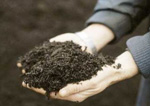Organic Methods...

Polyculture
Crop diversity (AKA Polyculture) is an important part of sustainably produced organic farming. Modern farming techniques focus on one crop over the largest piece of land possible. This is an extremely effective BUSINESS model. However, lack of biodiversity can have detrimental environmental effects, including increased drain on soil nutrients and vulnerability to pathogens. Planting a variety of vegetable crops supports a wider range of beneficial insects, soil microorganisms, and other factors that add up to overall farm health. We at Urban Organics grow a large number of plants in a relatively small space mimicking the natural environment. This is not only good for the earth, it also makes for better food.
Crop Rotation
Crop rotation is an integral part of the Urban Organic method. Crop rotation or Crop sequencing is the practice of growing a series of dissimilar types of crops in the same area in sequential seasons for various benefits such as to avoid the build up of pathogens and pests that often occurs when one species is continuously cropped. Crop rotation also seeks to balance the fertility demands of various crops to avoid excessive depletion of soil nutrients. A traditional component of crop rotation is the replenishment of nitrogen through the use of green manure (see below) in sequence with cereals and other crops. It is one component of polyculture. Crop rotation can also improve soil structure and fertility by alternating deep-rooted and shallow-rooted plants.
Green Manure
Green manure is a type of cover crop grown primarily to add nutrients and organic matter to the soil. Typically, a green manure crop is grown for a specific period, and then plowed under and incorporated into the soil. Green manures usually perform multiple functions, which include soil improvement and soil protection:
- Leguminous green manures such as clover and vetch contain nitrogen-fixing symbiotic bacteria in root nodules that fix atmospheric nitrogen in a form that plants can use.
- Green manures increase the percentage of organic matter (biomass) in the soil, thereby improving water retention, aeration, and other soil characteristics.
- The root systems of some varieties of green manure grow deep in the soil and bring up nutrient resources unavailable to shallower-rooted crops.
- Common cover crop functions of weed suppression and prevention of soil erosion and compaction are often also taken into account when selecting and using green manures.
- Some green manure crops, when allowed to flower, provide forage for pollinating insects.
Composting

Compost also known as brown manure, is the aerobically decomposed remnants of organic matter. It is used in landscaping, horticulture and agriculture as a soil conditioner and fertilizer. It is also useful for erosion control, land and stream reclamation, wetland construction, and as landfill cover (see compost uses).
Compost serves as a growing medium, or a porous, absorbent material that holds moisture and soluble minerals, providing the support and nutrients in which most plants will flourish. To maximize plant growth, it is sometimes necessary to dilute compost with soil sand, grit, bark chips, vermiculite, perlite, or clay granules.
